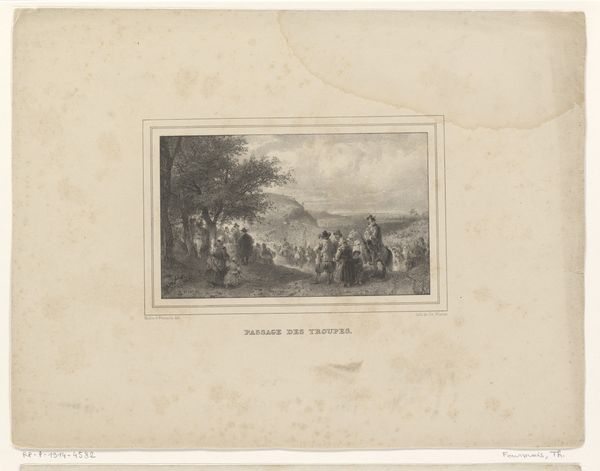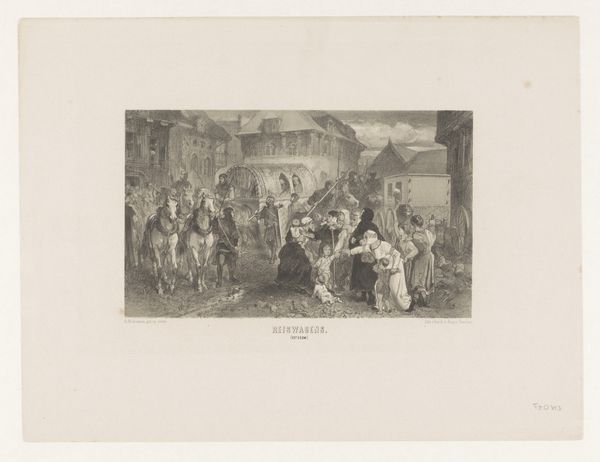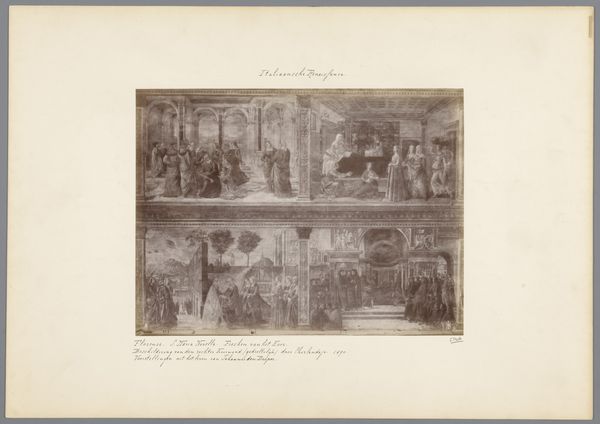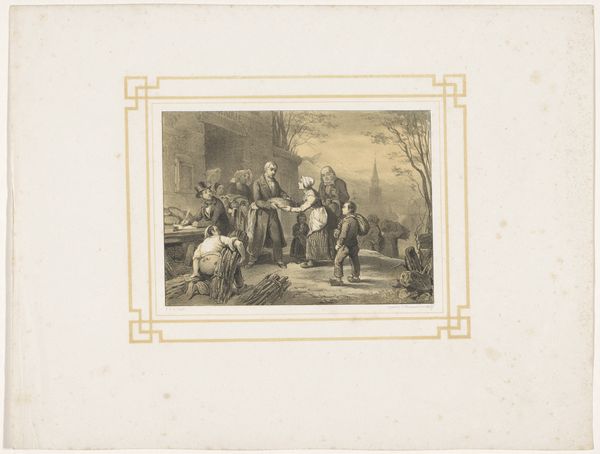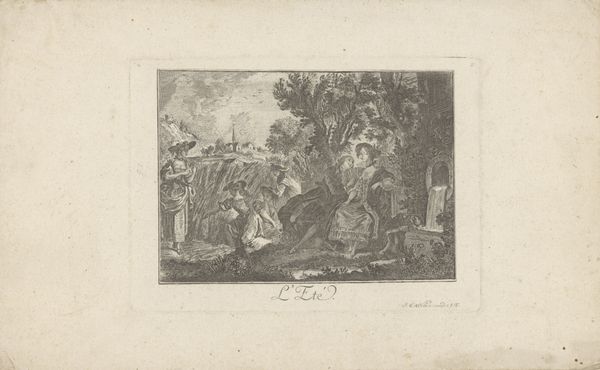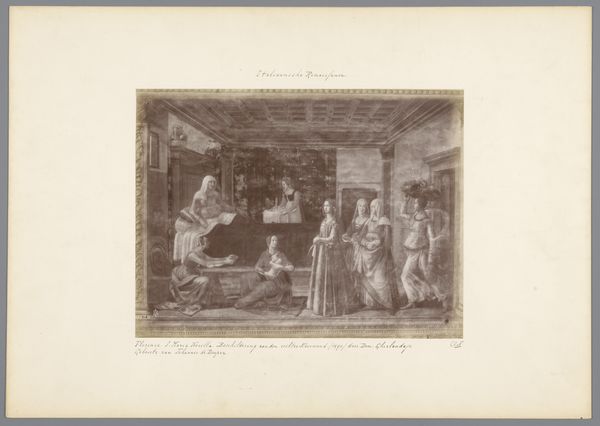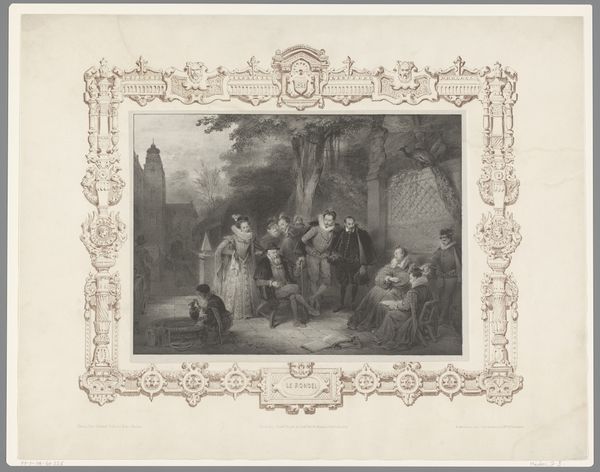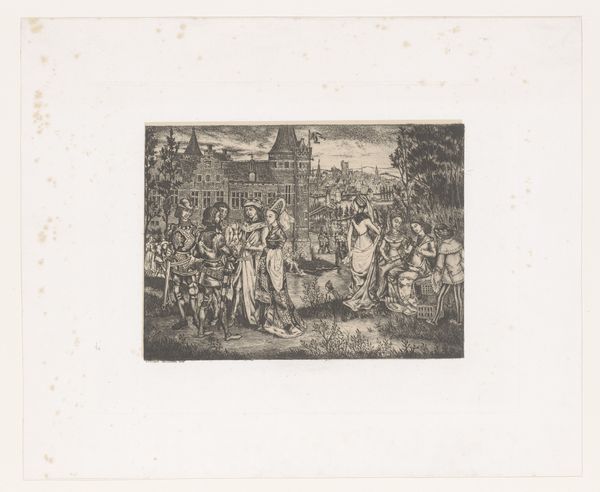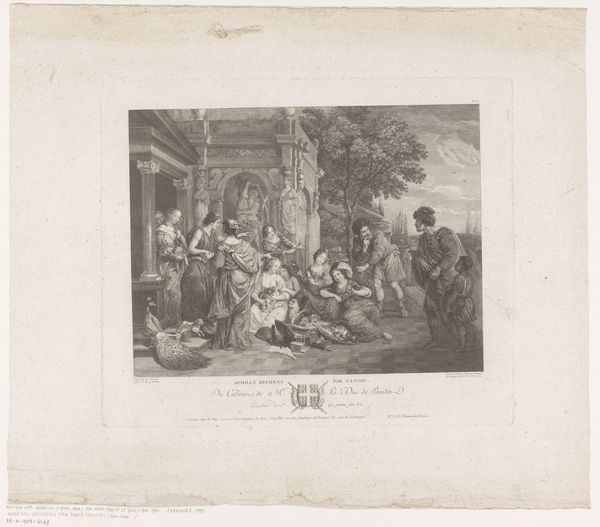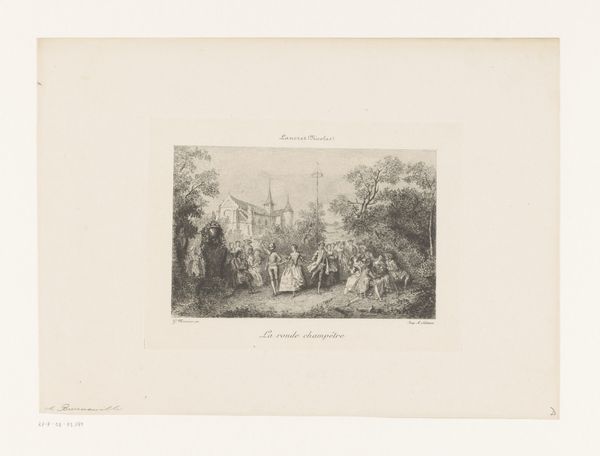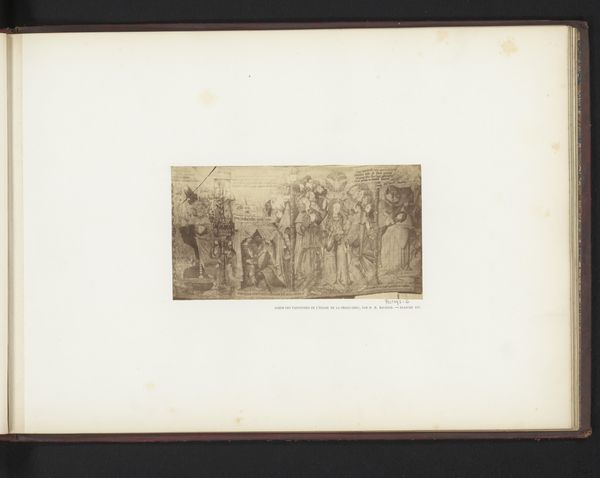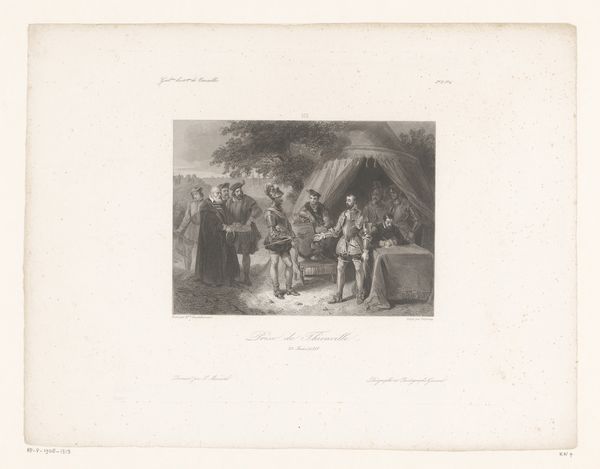
Fotoreproductie van een fresco in de Santa Maria Novella te Florence door Domenico Ghirlandaio, voorstellend de ontmoeting van Elizabeth en Maria c. 1875 - 1900
0:00
0:00
print, fresco, photography, gelatin-silver-print
# print
#
fresco
#
photography
#
gelatin-silver-print
#
history-painting
#
italian-renaissance
Dimensions: height 177 mm, width 248 mm
Copyright: Rijks Museum: Open Domain
Curator: This gelatin-silver print captures Domenico Ghirlandaio's fresco, dating roughly from 1875 to 1900. It depicts the Visitation, the meeting of Mary and Elizabeth, originally in the Santa Maria Novella in Florence. Editor: There’s an undeniable solemnity to it. Even in monochrome, the composition suggests a hushed, weighty encounter. It makes me think about what the making of a photographic reproduction entailed. Curator: Indeed, photography in this era served as a powerful tool for disseminating art. Frescoes, by their nature, are site-specific. Photography allowed for their broader consumption, shaping ideas about the Italian Renaissance beyond those who could travel. Editor: Absolutely. Looking closely, the textural details – the layered robes, the built environment surrounding the figures – become incredibly apparent. How would you say the reproduction process impacts how we view Ghirlandaio’s work today? Curator: It alters it considerably. What was once an integrated element of a specific architectural space is now a portable, reproducible image. The context shifts from religious devotion within a church to art appreciation mediated by photography. Editor: That contrast raises fascinating questions. Did this democratize art viewing or did it sever the work from its original context, reducing it to a mere aesthetic object of consumption? And what materials were lost and found along the way, given photography's unique way of reading texture and light? Curator: A little of both, I suspect. Mass reproduction meant accessibility, but at the cost of ritual and the labor that created the fresco in the first place. These photographs facilitated the dissemination of a visual language that Renaissance style helped construct in broader cultural spheres, from decorative art to clothing, changing our engagement with visual history forever. Editor: This process of replication is interesting. There are always questions about authenticity when materials and methods are so transformed across different art-historical mediums. I have certainly found a new respect for these types of gelatin-silver prints. Curator: Indeed. They serve not just as records but as cultural artifacts themselves. Editor: Exactly. Seeing it framed this way brings a unique richness that goes far beyond documentation.
Comments
No comments
Be the first to comment and join the conversation on the ultimate creative platform.
